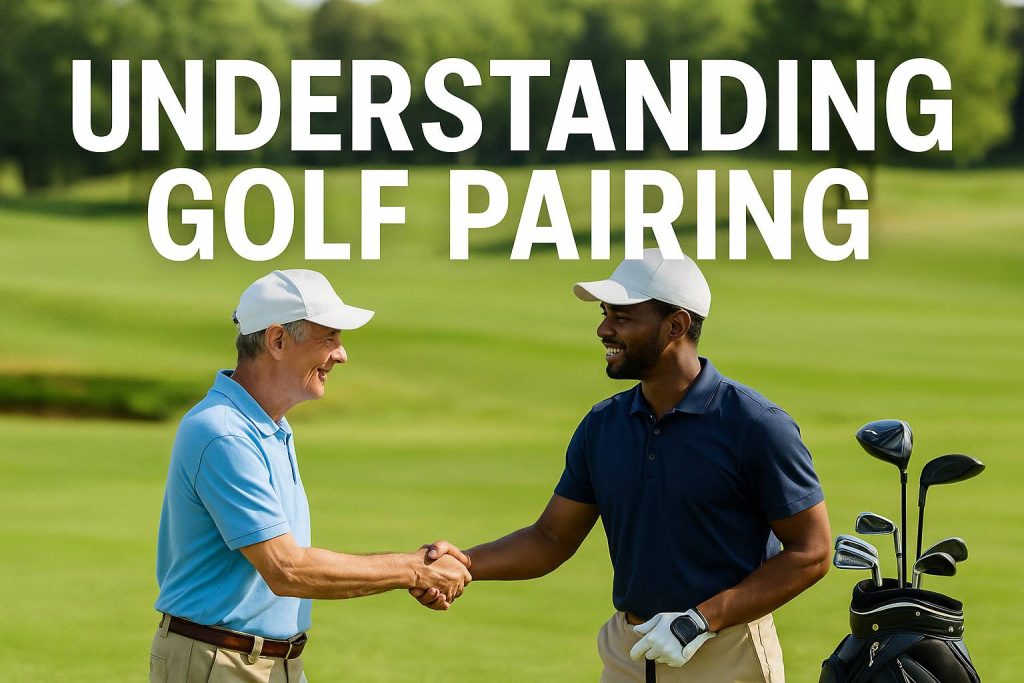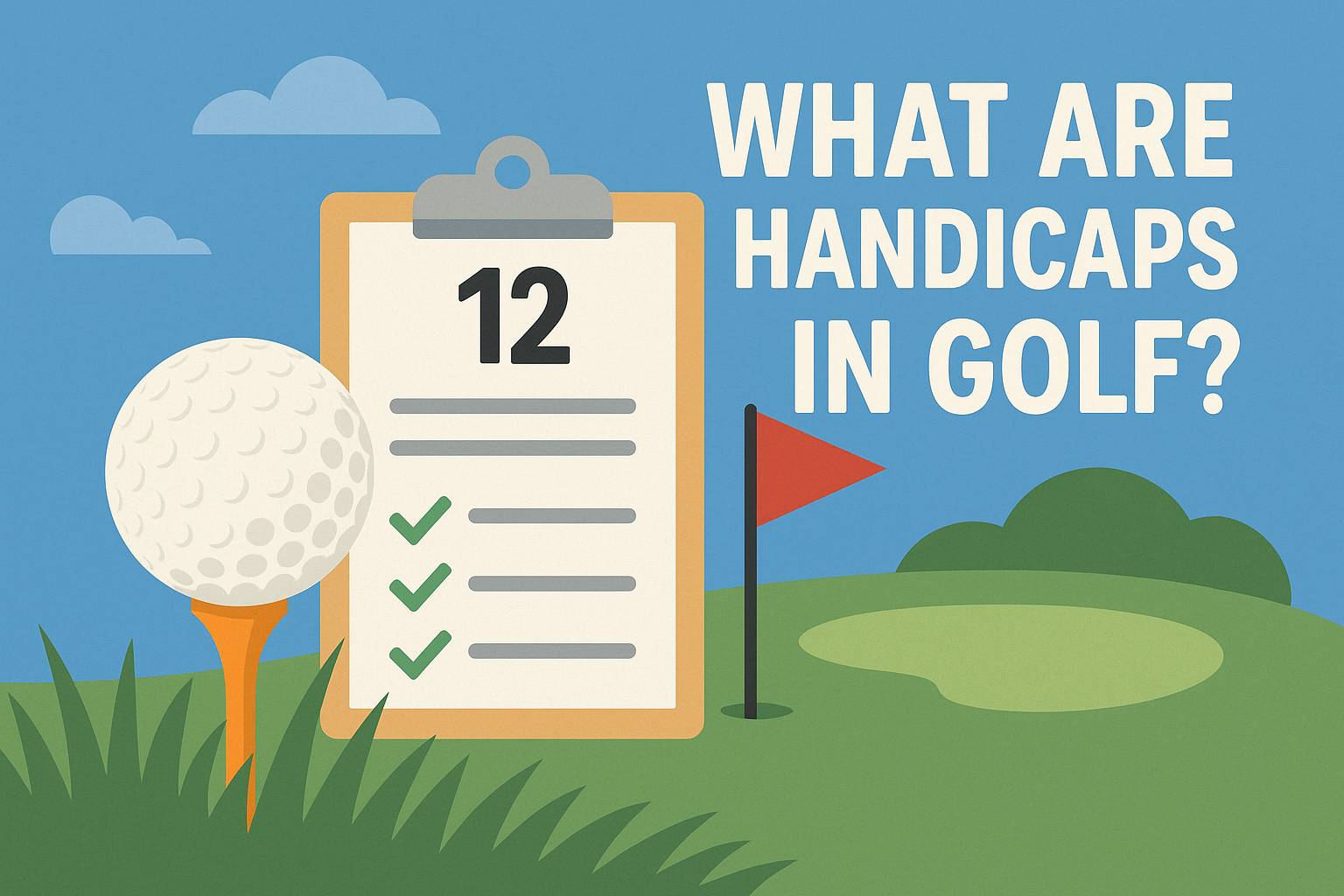In the world of golf, there are numerous technical terms that might seem unfamiliar to beginners but are essential in the organization of tournaments or regular games. One of the most frequently used terms is “pairing.” This term isn’t just about who plays with whom; it refers to a more comprehensive system used to manage the flow of a golf competition in an efficient and fair manner.
In this in-depth GoGolf article, we’ll explore what pairing means in golf, its main purposes, and the different types of pairings used across various tournament formats.
What Is Pairing in Golf and Why Does It Matter?
In general, pairing in golf refers to the process of grouping players into a flight—a group of two to four golfers playing together. The primary goal of pairing is to ensure a smooth and organized flow of the game, preventing scheduling conflicts or congestion on the course.
Pairings are typically determined before the match starts and are listed on a pairing sheet—a document that includes player names within each flight, tee times, shot order, and sometimes the starting hole (especially for shotgun formats).
Additionally, pairing is used to balance competition levels. In competitive events, players may be grouped based on handicaps, skill levels, or scores from previous rounds. For instance, on the PGA Tour, pairings for the first two rounds are usually arranged by officials, while the third and fourth rounds follow score-based rankings.
Thus, pairing is not merely a group assignment—it’s a structured system that influences game dynamics and player comfort throughout the round.

4 Common Pairing Types
| Type | Characteristics | Example Use Case |
|---|---|---|
| Handicap-Based | Balances player skill levels | Official tournaments |
| Random Draw | Randomized grouping | Charity golf events |
| Social Group | Based on personal or business relations | Corporate/family golf |
| Speed Grouping | Prioritizes fast play | Busy course schedules |
Key Components in Golf Pairing
Each pairing includes several critical components that players, tournament officials, and caddies need to pay attention to:
- Player Names: Identifies the group members (usually 2, 3, or 4 players).
- Tee Time: The exact time the flight will begin play.
- Starting Hole: Used in shotgun starts to assign different starting points.
- Shot Order: Who tees off first, second, etc.—decided by rules or drawing lots.
By clearly listing all these elements, the pairing system avoids errors like late tee-offs, confusion about where to start, or incorrect shot orders that could lead to penalties.
Pairings are also crucial for tournament logistics—like assigning golf carts (buggies), deploying marshals across holes, and ensuring timely event management.
Make golf booking effortless. Install GoGolf now!
The Strategic Function of Pairing in Golf Tournaments
Pairing plays a highly strategic role in organizing golf tournaments, especially competitive ones with large numbers of players. Here are its core benefits:
1. Ensuring Smooth Game Flow
With well-structured pairings, each flight progresses through the course without crowding specific holes. This is essential for 18-hole courses hosting dozens of flights simultaneously. Without proper pairing, long delays can occur, disrupting player focus.
2. Maintaining Competitive Fairness
In stroke play formats, pairing ensures that players face similar playing conditions. Golfers with similar handicaps are grouped together for balanced competition.
In later rounds, pairing top scorers together increases the intensity of competition by allowing direct strategic engagement between leaders.
3. Efficient Scheduling and Time Management
Time is precious in large tournaments. Pairings help organizers plan precise schedules and ensure players are on the course promptly. This is especially crucial for events with live TV broadcasts, where timing is critical.
4. Fostering Social Engagement and Networking
In corporate or social tournaments, pairings serve as opportunities to build relationships. Executives, public figures, or celebrities may be grouped together to encourage casual interaction in a relaxed environment.
Types of Pairing Based on Game Format
Pairing structures vary depending on the tournament format. Here are the most commonly used pairing types:
1. Pairing in Stroke Play
In stroke play—where players aim for the lowest total score over 18 or 36 holes—flights typically consist of 3 or 4 players. Although it’s an individual competition, group play makes scoring and movement more efficient. This format is standard in both professional and amateur tournaments.
2. Pairing in Match Play
Match play pits players head-to-head. Here, pairings are simple—just two players per match. The focus is on fair scheduling and avoiding overlap between matches.
3. Shotgun Start
This format assigns each flight to start at a different hole simultaneously (e.g., Flight 1 on Hole 1, Flight 2 on Hole 2, etc.). Shotgun starts are popular for large events, allowing all participants to finish at roughly the same time.
4. Pairing in Team Formats (Best Ball / Scramble)
For team-based formats like best ball or scramble, pairings are built around 2 to 4-person teams. In best ball, each player plays their own ball, and the team uses the best score for each hole. In scramble, all players hit from the same spot, then select the best shot and continue from there.
Sample Pairing Sheet Format
To simplify coordination, pairings are presented in table format—called a pairing sheet. Here’s a common example:
| Flight | Tee Time | Starting Hole | Player Names |
|---|---|---|---|
| 1 | 07:00 AM | Hole 1 | Budi, Rudi, Andi, Daniel |
| 2 | 07:10 AM | Hole 1 | Sinta, Lisa, Agus, Bambang |
| 3 | 07:00 AM | Hole 10 | Tommy, Kevin, Rico, Heru |
Pairing sheets are usually shared a day before the event, posted near the registration area, or sent via email. In larger tournaments, they may also be accessible through a dedicated golf app.
Conclusion: Why Pairing Is the Backbone of Golf Tournament Management
In practice, pairing is a crucial but often underappreciated element—especially by beginners. Without an organized pairing system, a golf tournament can descend into scheduling chaos, crowding issues, or even technical disputes among players.
By understanding the definition, strategic functions, components, and types of pairing, golfers can better prepare for tournaments and navigate the course confidently. More than just a technical grouping, pairing is also a strategy that enhances competition and fosters meaningful interaction on the course.
Whether you’re transitioning from recreational golfer to serious competitor, or organizing a major event, mastering the concept of pairing will elevate your gameplay and tournament readiness.
[ Follow our social media Account: GoGolf Instagram | GoGolf Facebook | GoGolf X ]











